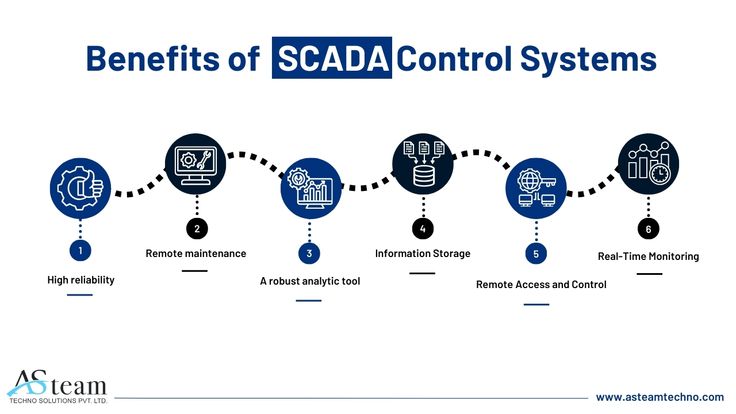
Critical Infrastructure systems such as waste and water management, power plants, electricity and transportation are foundational to our society. However, with the development and reliance on technology, has made them a growing target of cyberattacks. These offenses can cause irreparable and long-lasting damages if their vulnerabilities were to be exploited. Supervisory Control and Data Acquisition (SCADA) systems are commonly used in these industries to monitor and control operations (What is SCADA? Supervisory Control and Data Acquisition, 2018). It also can be used to effectively mitigate risks by implementing important security protocols.
Vulnerabilities within Critical Infrastructure Systems
As a result of their importance, industrial control systems (ICS) in critical infrastructure are often attacked because cybercriminals gain more from controlling those systems versus stealing data (Cyber attacks on Critical Infrastructure, 2016). Weaknesses in these systems include outdated operating systems, weak authentication, and unpatched software (Cybersecurity of Critical Infrastructure with ICS/SCADA systems, n.d.). Additionally, the complexity of critical infrastructure processes makes them susceptible to human error, which can become a vulnerability for criminal exploitation. These exposures all give access to cyber attackers to disable, control and deny access to any area to severely damage a nation’s foundation and economy.
The Role of SCADA Systems in Mitigating Risk
SCADA, a type of ICS, plays an important role in managing the operation of industrial systems by focusing on real-time monitoring and remote control to improve overall performance. Features such as reducing risks include alarms for potential problems, reports on equipment statuses and network data communication that collects data and sends them to the supervisory computers with the system (Awati & Loshin, 2025). Although these processes are important to ensure efficiency, safety and reliability, it can present potential security risks. If infiltrated by criminal hackers, these functionalities could lead to lasting damages on critical infrastructures. By working and securing these processes, organizations can safeguard the industrial backbones of a country.
Conclusion
As technology continues evolve, the safety protocols that we use need to evolve alongside it, especially within a country’s critical infrastructures. With persistent attacks on various industries, a comprehensive system and strategic plan are crucial to safeguard them. Addressing the vulnerabilities within industrial control systems that are present and ensuring that SCADA systems are up to date with standard cybersecurity measures, is essential to its sustainability and risk mitigation. If critical infrastructures fail, a nation’s stability is at risk, and it is our responsibility to prevent it.
Reference
Awati, R., & Loshin, P. (2025, January 27). What is SCADA (supervisory control and data
acquisition)?: Definition from TechTarget. WhatIs.
https://www.techtarget.com/whatis/definition/SCADA-supervisory-control-and-data-
acquisition
Cybersecurity of Critical Infrastructure with ICS/SCADA systems – IEEE Public Safety
Technology initiative. (n.d.). https://publicsafety.ieee.org/topics/cybersecurity-of-critical-
infrastructure-with-ics-scada-systems
Cyber attacks on Critical Infrastructure. (2016, June). https://commercial.allianz.com/news-and-
insights/expert-risk-articles/cyber-attacks-on-critical-infrastructure.html
What is SCADA? Supervisory Control and Data Acquisition. Inductive Automation. (2018,
September 12). https://inductiveautomation.com/resources/article/what-is-scada